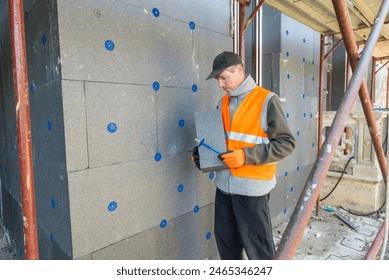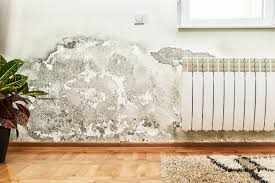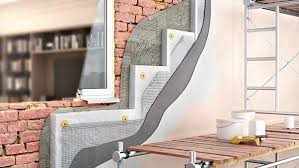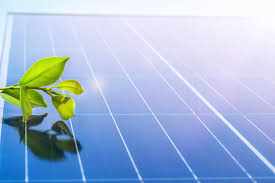
In the world of construction and building design, energy efficiency is no longer a luxury — it's a necessity. One of the key components that determines the energy performance and comfort of a building is wall insulation. Often hidden behind drywall or exterior cladding, wall insulation plays a crucial role in maintaining a stable indoor environment, reducing energy consumption, and contributing to overall building physics.
But how exactly does wall insulation work? Let’s dive into the science behind it.
What Is Wall Insulation?
Wall insulation refers to materials inserted within or applied to walls of a building to reduce the rate of heat transfer. This can be through conduction (heat flow through solid materials), convection (movement of air), or radiation (infrared energy). Insulation works by creating barriers that slow these processes, helping to keep heat inside during the winter and outside during the summer.
There are many types of insulation materials including fiberglass, mineral wool, rigid foam boards, cellulose, spray foam, and newer eco-friendly options. Each has different properties but serves the same fundamental purpose — resisting heat flow.
The Physics Behind Heat Transfer
To understand insulation, it's essential to grasp the basics of heat transfer. Heat moves from warmer areas to cooler ones via three primary mechanisms:
Conduction: This is the direct transfer of heat through materials. When one side of a wall is warm, heat travels through the wall material to the cooler side. Insulation materials have low thermal conductivity, meaning they conduct less heat and therefore slow down this process.
Convection: Heat can be transferred by moving air. In a wall cavity, warm air can circulate and carry heat, especially in uninsulated spaces. Insulation often works by trapping air in small pockets, minimizing air movement and reducing convection.
Radiation: Heat can also travel in the form of electromagnetic waves. Radiant barriers (reflective materials) are sometimes used in insulation to reflect heat away, especially in hot climates.
Insulation is designed to counter all three forms of heat transfer, with emphasis depending on climate, wall type, and building usage.
R-Value: Measuring Thermal Resistance
In building physics, the effectiveness of insulation is commonly measured by its R-value — a metric that indicates how well a material resists heat flow. The higher the R-value, the better the insulating performance.
Several factors affect R-value:
Material: Different materials have different inherent insulating abilities.
Thickness: Thicker insulation generally has a higher R-value.
Density: Some materials perform better when compacted to an optimal density.
Installation quality: Poorly installed insulation, with gaps or compression, can reduce performance.
In walls, the total thermal resistance also includes structural elements like studs, which may not insulate as well as the surrounding material. This is known as thermal bridging — when heat bypasses insulation through more conductive materials like metal or wood. Advanced framing techniques and insulated sheathing help minimize this issue.
Types of Wall Insulation
1. Batt and Roll (Blanket Insulation)
Made from fiberglass or mineral wool, batt insulation is one of the most common and cost-effective types. It's installed between studs, joists, and beams and is relatively easy to work with, though it must be precisely cut and fitted to avoid gaps.
2. Blown-in or Loose-fill Insulation
Typically made of cellulose, fiberglass, or mineral wool, this type is blown into cavities using specialized equipment. It’s great for retrofitting walls and fills irregular spaces more effectively than batts.
3. Rigid Foam Panels
These boards are made of polystyrene, polyisocyanurate, or polyurethane. They offer high R-values and are often used on the exterior of walls to reduce thermal bridging.
4. Spray Foam Insulation
This two-component mixture warm home grant expands on contact and fills gaps thoroughly. It offers high R-values and air-sealing properties, but it's more expensive and requires professional installation.
5. Reflective or Radiant Barriers
Mostly used in warmer climates, these Solar Panel Installation london materials reflect radiant heat rather than absorbing it. They're often installed on the outside of walls or under roof sheathing.
Why Wall Insulation Matters
Energy Efficiency
The primary benefit of wall insulation is reduced heat loss and gain, which significantly cuts down on heating and cooling energy requirements. Proper insulation can reduce utility bills by 15% or more, depending on the building's age and climate zone.
Thermal Comfort
Insulation keeps interior temperatures stable and comfortable throughout the year. By limiting temperature fluctuations, it reduces reliance on HVAC systems and enhances indoor livability.
Moisture Control
In conjunction with vapor barriers and air sealing, insulation helps prevent moisture buildup in walls, which can lead to mold growth and structural damage.
Noise Reduction
While not its primary purpose, insulation also helps dampen sound transmission through walls. Denser materials like mineral wool are especially effective for acoustic control.
Environmental Impact
Efficient insulation reduces energy consumption, which in turn lowers greenhouse gas emissions. Some modern insulation products are also made from recycled or renewable materials, adding to their environmental credentials.
Common Myths About Insulation
More insulation is always better: There's a point of diminishing returns. After a certain thickness, additional insulation provides less benefit relative to cost.
Insulation alone is enough: A well-insulated wall still needs proper air sealing and vapor control to perform optimally.
Insulation only matters in cold climates: Even in hot climates, insulation is essential for keeping cool air inside and reducing HVAC loads.
Conclusion
Wall insulation is a cornerstone of energy-efficient building design, directly influencing comfort, cost, and sustainability. By understanding how insulation works — through slowing conduction, convection, and radiation — homeowners and builders can make informed choices about materials and installation techniques.
Incorporating the principles of building physics into wall construction not only helps meet modern energy codes but also enhances the long-term performance of any structure. Whether you’re constructing a new building or retrofitting an old one, getting insulation right is a smart investment in comfort and efficiency.








Write a comment ...